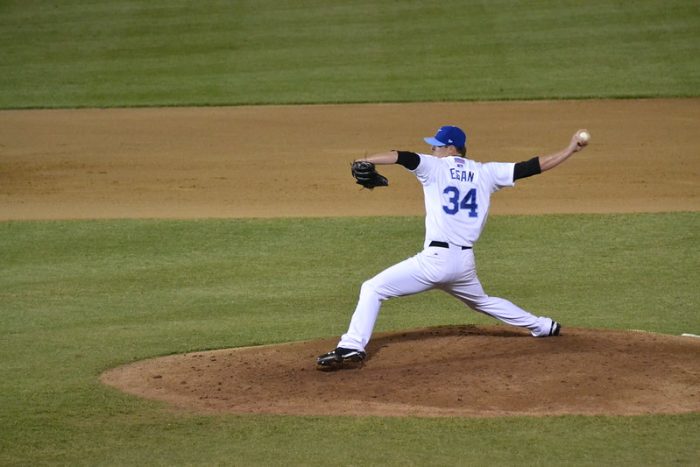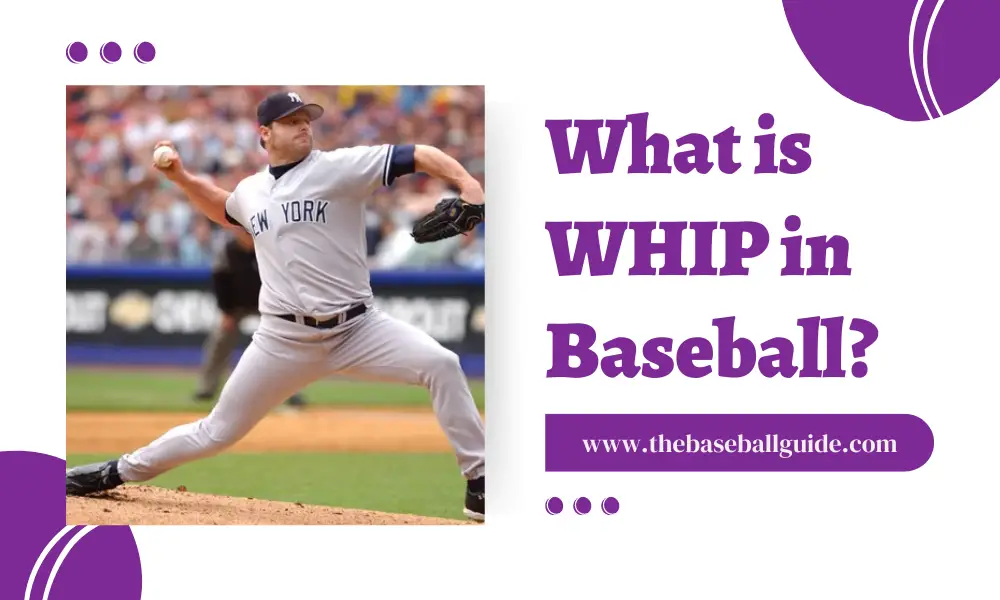Hey, there baseball fans! Or should I say pitcher’s fans in specific?
Cause if you’re looking to understand what is WHIP in baseball you are passionate about baseball, or in case I’m wrong then you are for sure just a knowledge gainer, was I right this time?
Regardless if I was right or wrong, the one thing I’m sure about is that you should scroll through to learn about the statistic WHIP in baseball and make sure you read throughout cause there are brownie pieces of information throughout the article.
What does WHIP mean in Baseball?
WHIP is an acronym for one of the most used statistics known as the “Walks and Hits per Inning Pitched” of an MLB pitcher. WHIP is used to evaluate the performance of a pitcher by calculating the number of baserunners a pitcher gives in every inning.
WHIP Calculator
Go ahead, use this calculator, and check the WHIP number of your player.
To calculate WHIP, fill in the first three details, and you’ll get the WHIP number.
- Bad Pitcher = 1.5+ WHIP
- Average Pitcher = 1.3 – 1.5
- Good Pitcher = 1.1 – 1.3
- Elite Pitcher = Less than 1
Origin
Back in the year of 1979, Daniel Okrent, also known as the founding father of WHIP was finding reliable ways of measuring a pitcher’s performance. Where initially he came up with the “Innings Pitched Ratio” which was later on turned into an abbreviation known as WHIP.
Why Calculate WHIP?
Calculating WHIP has its pros different for the players and different for the fans,
- For Players – It helps the players access their performance and hence helps them in understanding the required amount of practice and training they should go through to give a good performance.
- For Fans – As a fan one deserves to know about the player and their performance and helps create a better picture of the person’s abilities and chances of their wins, so you as a fan can sit back, calculate, and probably make up your mind if the pitcher you’re supporting will perform as good as you thought?
How To Calculate WHIP?
To calculate a pitcher’s WHIP statistic, here is the formula you could use,
WHIP = (W+H)/TIP
Where,
W = Walks
H = Hits
TIP = Total Innings Pitched
For example, if a pitcher named David has given up around 44 walks, 300 hits, and pitched a total of 200 innings, then his WHIP statistic would be,
WHIP = (W+H)/TIP
WHIP = (44+300)/200
WHIP = 344/200
WHIP = 1.72 WHIP
To know if this WHIP statistic is good enough, please take a look at the next section of the article.
Brownie Information:
If you are one of the overachievers or passionate about baseball or just want to learn a bit more, or maybe just do not know much about baseball, below is the set of definitions that’ll help you have a better grasp of the game as well as the statistic,
- Walk – It is the advance to first base which is awarded to a batter who takes the four pitches that are balls.
- Hit – It is the hit that represents that the batter has reached the base safely.
- Inning – It is one of the nine divisions of a regulation game and in this innings every team gets their turn at bat limited by three outs.
Try out our WHIP Calculator!
What Is A Good WHIP?

A good WHIP understanding breakdown is, “lesser the number, the better the pitcher”. Below is the scale for a better understanding of the WHIP statistic,
- > 1.5 WHIP – A Bad Level Pitcher
- 1.3 – 1.5 WHIP – An Average-Level Pitcher
- 1.1 – 1.3 WHIP – A Good-Level Pitcher
- < 1 WHIP – An Elite Level Pitcher
So, as mentioned in the previous section the pitcher named David we took in the example has his WHIP statistic as 1.72, and as per the scale it is a very bad one, and hence, David is a bad level pitcher (so, between us I think he should probably be replaced!).
Brownie Tip: For a pitcher to score a lower WHIP, it is advised that they record outs and avoid their best for the baserunners to reach the bases.
Top 20 Pitchers Based On WHIP
Here is a list of the top 20 pitchers in Major League Baseball based on WHIP. This is the most recent list which was updated in June 2022.
| Rank | Player Name | WHIP |
|---|---|---|
| 1 | Addie Joss | 0.9678 |
| 2 | Ed Walsh | 0.9996 |
| 3 | Mariano Rivera | 1.0003 |
| 4 | Clayton Kershaw | 1.0013 |
| 5 | Jacob deGrom | 1.0114 |
| 6 | Chris Sale | 1.0423 |
| 7 | John Montgomery Ward | 1.0438 |
| 8 | Pedro Martínez | 1.0544 |
| 9 | Christy Mathewson | 1.0581 |
| 10 | Trevor Hoffman | 1.0584 |
| 11 | Walter Johnson | 1.0612 |
| 12 | Mordecai Brown | 1.0658 |
| 12 | Charlie Sweeney | 1.0673 |
| 14 | Reb Russell | 1.0800 |
| 15 | Max Scherzer | 1.0811 |
| 16 | Jim Devlin | 1.0868 |
| 17 | Smoky Joe Wood | 1.0869 |
| 18 | Jack Pfiester | 1.0887 |
| 19 | George Bradley | 1.0901 |
| 20 | Tommy Bond | 1.0908 |
Brownie Fact
The one huge con about the WHIP statistic is that it does not take into consideration how the baserunner got to the base, so WHIP does not include or show a hit batter or an error.
Tips and Strategies to Improve Your WHIP in Baseball
Improving WHIP (Walks plus Hits per Inning Pitched) is an essential part of being a successful pitcher in baseball.
It measures a pitcher’s ability to prevent baserunners and is a crucial factor in evaluating a pitcher’s performance. Here are some tips and strategies to help improve your WHIP:
- Work on your control: One of the most important factors in lowering your WHIP is improving your control. Make sure you are consistently hitting your spots and not giving batters anything to hit. This can be achieved through regular practice and repetition.
- Use off-speed pitches effectively: Effective use of off-speed pitches can help keep batters off-balance and make them less likely to hit the ball hard. This can result in more outs and fewer hits and walks.
- Mix up your pitches: As a pitcher, you should have a variety of pitches in your arsenal. Mixing up your pitches can keep batters guessing and make it harder for them to make solid contact. This can lead to fewer hits and more outs.
- Improve your pitch selection: Knowing when to throw certain pitches can make a big difference in preventing baserunners. For example, throwing a breaking ball in a fastball count can catch a batter off guard and result in a strikeout.
- Develop a consistent pre-pitch routine: Developing a consistent pre-pitch routine can help you stay focused and calm on the mound. This can help you make better pitches and prevent walks and hits.
- Focus on pitch location: Location is key in preventing baserunners. Make sure you are hitting your spots consistently and not leaving pitches over the middle of the plate.
- Pay attention to scouting reports: Scouting reports can provide valuable information about opposing batters’ tendencies and weaknesses. Use this information to your advantage and adjust your pitching strategy accordingly.
Improving your WHIP takes time and practice, but by focusing on these strategies, you can become a more effective and successful pitcher on the mound.
Conclusion
It is pretty understandable how easy to calculate and how useful this particular statistic is for the players as well as for the fans.
Just make sure you remember the cons of the statistic so use it when there is no requirement of showing the hit batter or error.
Check Out Our Whip Calculator if you haven’t yet!
You can also read Softball Catcher Drills & How To Hit A Softball With Power Or What is WAR in Baseball!




